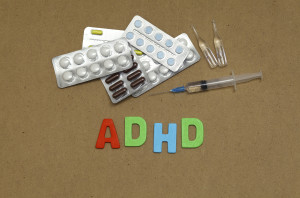-
 The number of teens abusing prescription drugs for attention deficit hyperactivity disorder (ADHD) is troubling. The motivations for abusing these drugs are often noble: Teens want to be able to stay up longer to study or to get a paper finished, for example.
The number of teens abusing prescription drugs for attention deficit hyperactivity disorder (ADHD) is troubling. The motivations for abusing these drugs are often noble: Teens want to be able to stay up longer to study or to get a paper finished, for example. -
Most drug abuse occurs because the substance produces euphoric effects for the user that they want to repeat as frequently as possible. Steroids are a notable exception to this rule, commonly being abused out of a desire to “bulk up” or otherwise improve physical appearance. Although the purpose is different, the model of steroid abuse is useful for understanding the causes of Adderall abuse among college and high school students, and it’s been referred to as the “academic steroid” for that reason.
-
Most people are familiar with the proverb, “An ounce of prevention is worth a pound of cure.” A recent study from researchers seeking to prevent teen drug abuse points out that some prevention programs are measurably better than others, and prevention is cheaper than cures.
-
Many prescription drug addictions begin with a legitimate health problem. An individual that suffers from chronic pain from a significant injury may receive a prescription painkiller prescription, but a short time later ever-increasing doses may be needed to achieve the same relief. What begins as a chronic health problem can lead to a full-blown addiction.
-
Young men wanting to build muscle need to know that as tempting as steroids may appear, their use comes at a very high price. The substances are illegal in most countries, but men preoccupied with achieving a certain physical appearance may think the risk is worth it. A recent study finds that abusing steroids can increase a young man’s risk for developing heart disease and abuse of other drugs, a practice referred to as polypharmacy.
-
College students wanting to prove their independence experiment with alcohol, marijuana and tobacco. And right there near the top of abused substances on campus are prescription drugs. A research paper reveals that while prescription drug abuse is beginning to fall off among coeds, the problem remains for around five to 10 percent of college students.
-
Most Americans are all too familiar with the brand names of powerful prescription painkillers. Drugs like Percocet, Dilaudid, OxyContin and Vicodin are so well known that patients frequently ask for them by name. Many patients facing discomfort will do whatever it takes and consume whatever they can get in order to avoid more pain. Our nation constitutes just five percent of the world’s population, yet we consume 80 percent of all opioids.
-
The American prescription abuse epidemic affects all age groups but has perhaps hit teens the worst. More than 2,000 teens try abusing prescription drugs for the first time every day, and a large percentage of them quickly develop an addiction. Unfortunately, these drugs are just as dangerous as many illegal street drugs when not taken as directed. Unlike street drugs, however, prescription drugs are available legally through a doctor and may be present in any home. In fact, the majority of teens get their prescription drug fix from family and friends.
-
The misuse of prescription drugs has become a popular trend among American teens. Many begin using because they assume that prescription medications are a safer way to get high when compared with street drugs.
-
Heavy drinking is a pattern of excessive alcohol consumption that increases a person’s chances of developing diagnosable problems with alcohol abuse or alcoholism. People already affected by these conditions also typically drink heavily on a regular basis. In a study published in January 2014 in the journal Alcohol and Alcoholism, researchers from the University of Vermont sought to determine if the “positive” and “negative” mood changes associated with heavy drinking differ between men and women. These researchers concluded that some mood changes occur in both men and women, while others tend to occur only in men.